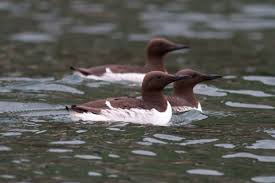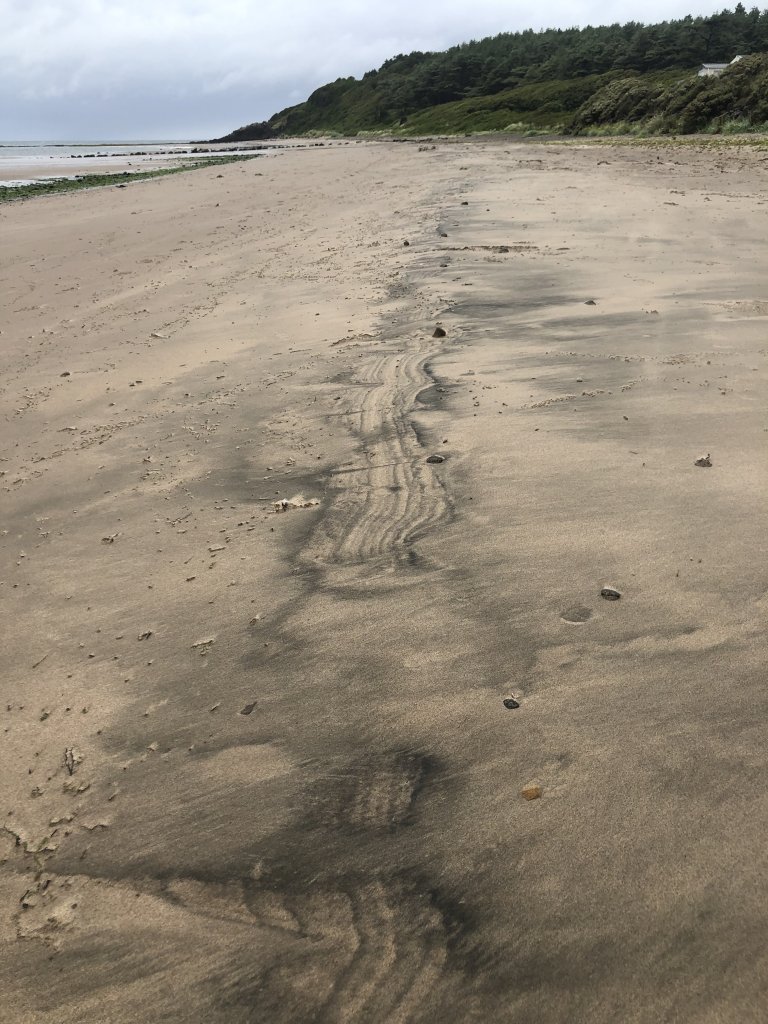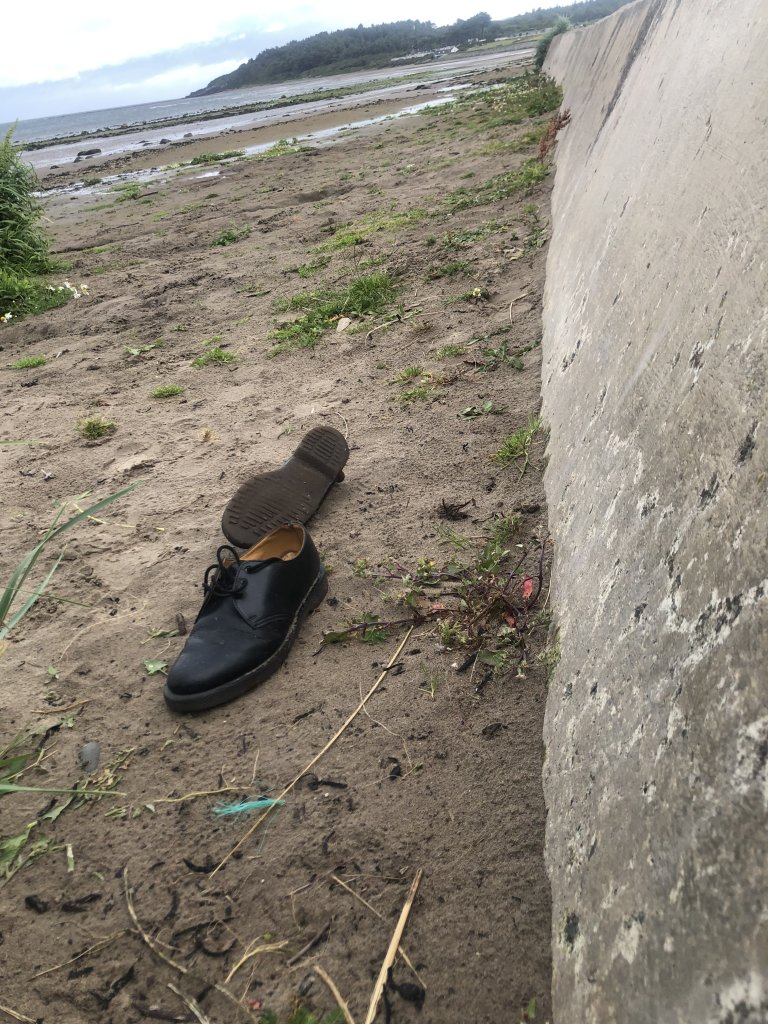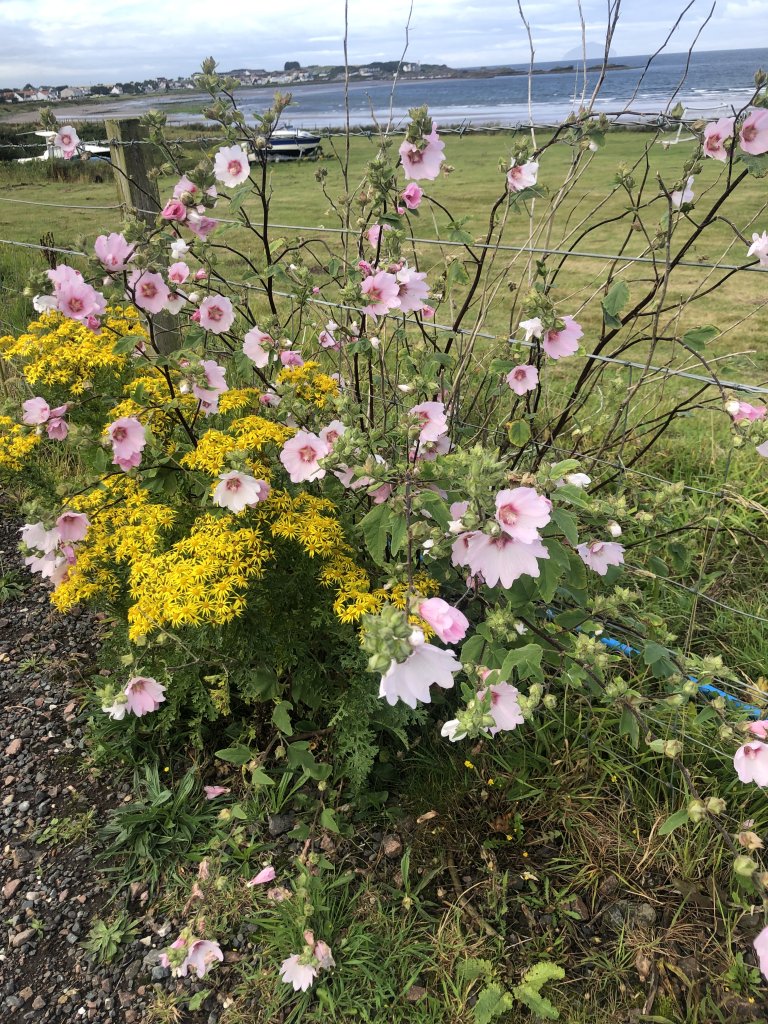Bird life
August 3, 2022, 11:30 am , by Richard Lutz
RICHARD LUTZ is confronted by remains of the day

These are guillemots. They soar snd sweep up and down the British coasts. And they’re part of a massive natural cull as thousands- probably tens of thousands – are dying from avian flu.
On my beach, south of Glasgow, we counted 75 bodies lying on the crescent shore. And these are the remains that made it to land. Who knows the uncounted dead still at sea.
The guillemots are not the only type of bird to die. A deep diving gannet lies with its long bill, dead in the sand, its beautiful yellow eye staring sightless.

Gulls and puffins too are victims.
We phoned the authorities. They acted as quickly as possible considering the wave of alerts they receive. Two days after our warning, a team in full Hazmat suits carefully bagged up the guillemots. DEFRA- the government agency managing rural affairs- was in the sands too taking tests. I just wonder how the nearby offshore volcanic plug of Ailsa Craig is faring with an estimated 70,000 gannets nesting on its cliffs and nooks.
Of course, avian flu is sweeping through farms and animal centres too. But it’s the people who live on the coastal stretches that see the deaths each day.
And for some time too. Last winter I ran across 100 dead barnacle geese on the Scottish Solway coast. It was estimated at the time that 3500 of the species died from flu on the mainland and islands: https://richardlutz.co.uk/blog/death-on-the-shore/
With that duration of disease, you wonder how long before the flu rises through the food chain. Dogs love to mooch near bird corpses and could spread infection. And bring it into our homes too, though at present Defra discounts worries that humans can easily pick up the disease. But its specialists do warn about close contact with dead birds.
Now, five days later, the beach is clean. Hazmat squads, the wind and waves have scrubbed down the sands:

I look for bird bodies. Gone. Only a pair of lost shoes stay the course:

And bordering the shoreline, a gift of wild mallow and ragwort:

Shoes and mallow aside, it’s a small relief to discover no deaths among the busy sandpipers or the orange billed oystercatchers, squawky things which patrol our shore like low flying jets. Nor any fatal hint of the flu among the elegant swans with their cygnets which use the bay as their second homes. Not yet anyway.




Tina Mara
Sad, indeed
LC
Strangely – and thankfully – we didn’t see any dead birds on the stretch between Kilranny and Girvan on Sunday.
Kim Campbell
So sad. Richard, are those your shoes?
Mark Bernstein
Tragic and so little reported.
Steve Carr
Gosh! Horrifying
Bill R
No dead birds here in Birmingham
Jan Oyabode
Ach- ..so sad
Nola McGuire in Thurso
There are dead Sea birds here, but not many, but we have very few anyway.. not sure why.. .no fish? 70 guillemots is an awful lot..
Will Call
Yep, it’s a tragedy. I have been following it on the RSPB web site
Eileen Vannin
Featured on The Today programme on the Beeb this AM
Subscribe to new posts.